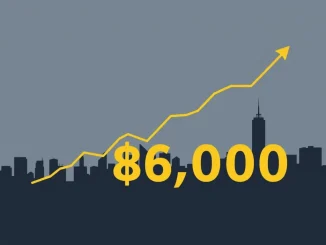
The world of finance is constantly evolving, and the latest news from Bank of America confirms that major players are looking closely at digital assets. If you’re following the intersection of traditional finance and crypto, you’ll want to pay attention to this development.
Bank of America Stablecoin Ambitions Confirmed
In a notable confirmation reported by JinSe Finance, Bank of America CEO Brian Moynihan has stated that the banking giant is indeed engaged in **Bank of America stablecoin** initiatives. This isn’t just theoretical exploration; the bank is actively involved in **stablecoin development** internally and is also collaborating with others in the industry.
This news highlights a growing trend: large financial institutions are recognizing the potential of blockchain technology and digital currencies, specifically stablecoins, for various applications beyond speculative trading.
Why Are Banks Interested in Stablecoins?
The move towards digital assets, particularly stablecoins pegged to fiat currencies like the US dollar, offers several potential advantages for institutions like Bank of America:
- Faster Settlements: Traditional cross-border payments can be slow and costly. Stablecoins could facilitate near-instantaneous settlements.
- Increased Efficiency: Automating processes like reconciliation and clearing using blockchain technology can reduce operational overhead.
- New Services: Developing stablecoin capabilities could enable new product offerings for corporate clients, such as tokenized deposits or streamlined treasury management.
- Interoperability: **Enterprise stablecoins** could potentially connect different financial systems more seamlessly.
This exploration by Bank of America underscores the potential for **blockchain in banking** to revolutionize core financial operations.
The Broader Shift: Traditional Finance Crypto Adoption
Bank of America’s confirmation isn’t happening in a vacuum. It’s part of a larger trend where **traditional finance crypto** integration is becoming increasingly common. Many major banks and financial service providers are exploring or implementing blockchain-based solutions for various use cases, from payments to asset tokenization.
While retail cryptocurrency trading grabs headlines, the real focus for many institutions is on leveraging the underlying technology for infrastructure improvements and new business models. Stablecoins, with their relative price stability compared to volatile cryptocurrencies like Bitcoin or Ethereum, are a logical starting point for many enterprise applications.
What This Means for the Future
The fact that a major player like Bank of America is dedicating resources to **stablecoin development** signals confidence in the technology’s future relevance within the established financial system. While regulatory clarity is still evolving globally, the commitment from large institutions indicates a belief that these digital assets will play a role in the future of finance.
This could pave the way for broader institutional adoption, potentially bridging the gap between the legacy financial system and the emerging digital asset ecosystem. The development of proprietary stablecoins by banks could also compete with existing stablecoins issued by crypto-native companies.
Conclusion: A Significant Step for Digital Assets
Bank of America’s confirmation of its active **Bank of America stablecoin** project is a significant development. It reinforces the narrative that digital assets and blockchain technology are moving beyond the fringes and into the core operations of major financial institutions. This push from **traditional finance crypto** efforts, particularly in areas like **stablecoin development** and **blockchain in banking**, suggests a future where digital currencies play a more integrated role in global commerce and finance, driven by the pursuit of efficiency and innovation.



